Mental disorder signs. Psychosis and comorbid mental disorders in women
Psychosis- a mental illness in which a person cannot adequately perceive the surrounding reality and respond to it appropriately. Psychoses are very diverse in their manifestations. They accompany many diseases such as schizophrenia, senile dementia, delirium tremens or may be an independent pathology.
So what is psychosis?
This is a mental disorder in which reality is so distorted in the mind of a person that this “picture” no longer has anything to do with what other people see. Being objective prevents a person from constant fear for his life, voices in his head that order him to do something, visions that are not available to anyone else ... These internal prisms change the patient's behavior. His reactions become completely inadequate: causeless laughter or tears, anxiety or euphoria. All patients with psychosis manifest differently. Some are sure that special services are hunting for them, others assure others of their superpowers, and still others persistently pursue the object of their love, groundlessly laying claim to it. It is impossible to list all the manifestations of psychosis, but psychiatrists managed to systematize them by combining them into groups.
Psychosis is not just a wrong train of thought. One should not think that the sick person is deluded or cannot keep his nerves under control. Do not argue and even more so condemn him. Psychosis is the same disease as diabetes mellitus. This is also a violation of metabolic processes, but only in the brain. You are not afraid of diabetics, you do not condemn them for their disease. You sympathize with them. Patients with neurosis deserve the same attitude. By the way, scientists have proven that mentally healthy people commit crimes more often than those with psychosis.
Don't label a person. Psychosis is not a life sentence. It happens that after a period of illness, which can be quite difficult, the psyche is completely restored and problems never arise again. But more often the disease has a cyclical nature. In this case, after a long period of health, an exacerbation occurs: hallucinations and delusions appear. This happens if you do not strictly follow the recommendations of the attending physician. In severe cases, the disease becomes chronic, and mental health does not return.
Psychosis is a fairly common problem. According to statistics, 15% of patients in mental hospitals are patients with psychosis. And 3-5% of the total population suffer from psychosis caused by various diseases: asthma, cerebral atherosclerosis, etc. But there are still thousands of people whose psychosis is associated with external causes - taking drugs, alcohol, medicines. To date, doctors cannot calculate the exact number of patients with psychosis.
Psychosis affects both children and adults, both men and women. But some forms of the disease predominantly affect women. So, women suffer from manic-depressive syndrome 3-4 times more often. Psychoses are more likely to occur during menstruation, menopause, and after childbirth. This suggests that mental illness is associated with fluctuations in hormone levels in the female body.
If you or someone close to you has signs of psychosis, do not despair. Modern medicine successfully copes with this disease. And the notorious "accounting" was replaced by the consultation of the local psychiatrist - consultative and medical assistance. Therefore, the fact of treatment will not spoil your future life in any way. But attempts to cope with the disease on their own can lead to irreparable changes in the psyche and to disability.
Causes of psychosis
mechanism of psychosis. At the heart of psychosis are violations of the brain cells (neurons). Inside the cell there are components - mitochondria, which provide cellular respiration and give it energy for activity in the form of ATP molecules. These compounds act as an electrical current for a special sodium-potassium pump. It pumps into the neuron the chemical elements necessary for its work: potassium, sodium, calcium.If the mitochondria are not producing ATP, then the pump is not working. As a result, cell activity is disrupted. This neuron remains “hungry” and experiences an oxygen deficiency, despite the fact that a person eats normally and gets enough fresh air.
Neurons in which the chemical balance is disturbed cannot form and transmit nerve impulses. They disrupt the entire central nervous system, leading to the development of psychosis. Depending on which parts of the brain are more affected, the manifestations of the disease depend. For example, lesions in the subcortical emotional centers lead to manic-depressive psychosis.
Factors and pathologies that lead to psychosis
- Bad heredity.
There is a group of genes that are passed from parents to children. These genes control the sensitivity of the brain to external influences and signal substances. For example, the neurotransmitter dopamine, which causes a feeling of pleasure. People with burdened heredity are more susceptible to the influence of negative factors, whether it be illness or psychological trauma. Their psychosis develops at an early age, quickly and in severe form.
If both parents are sick, there is a 50% chance that the child will have psychosis. If only one of the parents is sick, then the risk for the child is 25%. If the parents did not suffer from psychosis, then their children may also face such a problem, having received “defective genes” from past generations.
- Brain Injuries:
- injuries received by the child during childbirth;
- bruises and concussions of the brain;
- closed and open craniocerebral injuries.
- brain poisoning can be caused by various substances.
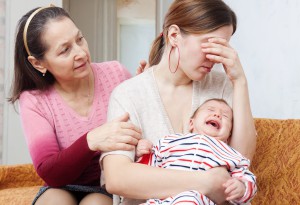
- Diseases of the nervous system: multiple sclerosis, epilepsy, stroke, Alzheimer's disease, Parkinson's disease, temporal lobe epilepsy These diseases of the brain cause damage to the bodies of nerve cells or their processes. The death of the cells of the cortex and deeper structures of the brain causes swelling of the surrounding tissue. As a result, the functions for which the damaged areas of the brain are responsible are disrupted.
- Infectious diseases: influenza, mumps (mumps), malaria, leprosy, Lyme disease. Living and dead microorganisms secrete toxins that poison nerve cells and cause their death. Intoxication of the brain negatively affects the emotions and thinking of a person.
- brain tumors. Cysts, benign and malignant tumors compress the surrounding brain tissues, disrupt blood circulation, and the transfer of excitation from one brain structure to another. Nerve impulses are the basis of emotions and thinking. Therefore, a violation of the passage of the signal manifests itself in the form of psychosis.
- Bronchial asthma. Severe asthma attacks are accompanied by panic attacks and oxygen starvation of the brain. Lack of oxygen for 4-5 minutes causes the death of nerve cells, and stress disrupts the smooth functioning of the brain, leading to psychosis.
- Diseases accompanied by severe pain Key words: ulcerative colitis, sarcoidosis, myocardial infarction. Pain is stress and anxiety. Therefore, physical suffering always has a negative impact on emotions and the psyche.
- systemic diseases, associated with impaired immunity: systemic lupus erythematosus, rheumatism. The nervous tissue suffers from toxins secreted by microorganisms, from damage to the cerebral vessels, from an allergic reaction that occurs with systemic diseases. These disorders lead to a failure of higher nervous activity and psychosis.
- Lack of vitamins B1 and B3 that affect the functioning of the nervous system. They are involved in the production of neurotransmitters, ATP molecules, normalize metabolism at the cellular level, have a positive effect on emotional background and human thinking ability. Vitamin deficiency makes the nervous system more sensitive to external factors that cause psychosis.
- Electrolyte imbalance associated with deficiency or excess of potassium, calcium, sodium, magnesium. Such changes can be caused by persistent vomiting or diarrhea when electrolytes are washed out of the body, prolonged diets, uncontrolled use of mineral supplements. As a result, the composition of the cytoplasm in nerve cells changes, which negatively affects their functions.
- hormonal disorders, caused by abortion, childbirth, disruption of the ovaries, thyroid gland, pituitary gland, hypothalamus, adrenal glands. Long-term violations hormonal background disrupt brain function. There is a direct relationship between the nervous system and the endocrine glands. Therefore, strong fluctuations in hormone levels can cause acute psychosis.
- Mental trauma: severe stress, situations in which life was endangered, loss of work, property or loved one and other events that fundamentally change future life. Nervous exhaustion, overwork and lack of sleep also provoke mental disorders. These factors disrupt blood circulation, the transmission of nerve impulses between neurons, metabolic processes in the brain and lead to the appearance of psychosis.
Risk factors for psychosis
age factorDifferent psychoses manifest themselves in different periods of a person's life. For example, in adolescence, when a hormonal explosion occurs, the likelihood of schizophrenia is high.
Manic-depressive psychosis most often affects young active people. At this age, fateful changes occur, which are a heavy burden on the psyche. This is admission to a university, finding a job, starting a family.
In the period of maturity, syphilitic psychoses occur. Since changes in the psyche begin 10-15 years after infection with syphilis.
In old age, the appearance of psychosis is associated with menopause in women, age-related changes in blood vessels and nerve cells. Violation of blood circulation and destruction of nervous tissue leads to senile psychosis.
gender factor
 The number of men and women suffering from psychosis is about the same. But some types of psychosis can affect more members of the same sex. For example, manic-depressive (bipolar) psychosis in women develops 3 times more often than in men. And monopolar psychosis (attacks of depression without a period of excitement) has the same tendency: there are 2 times more female representatives among patients. Such statistics are explained by the fact that the female body often experiences hormonal surges that affect the functioning of the nervous system.
The number of men and women suffering from psychosis is about the same. But some types of psychosis can affect more members of the same sex. For example, manic-depressive (bipolar) psychosis in women develops 3 times more often than in men. And monopolar psychosis (attacks of depression without a period of excitement) has the same tendency: there are 2 times more female representatives among patients. Such statistics are explained by the fact that the female body often experiences hormonal surges that affect the functioning of the nervous system.
In men, psychosis due to chronic alcoholism, syphilitic and traumatic psychosis are more common. These "male" forms of psychosis are not associated with the level of hormones, but with the social role, the behavior of the stronger sex. But early cases of psychosis in Alzheimer's disease in men are associated with genetic characteristics.
Geographic factor
It has been noticed that mental illnesses, including psychosis, more often affect residents of large cities. And those who live in small settlements and in rural areas risk less. The fact is that life in megacities has a high pace and is full of stress.
Illumination, average temperature and daylight hours have little effect on the prevalence of diseases. However, some scientists note that people born in the northern hemisphere during the winter months are more prone to developing psychosis. The mechanism of development of the disease in this case has not been elucidated.
social factor
Psychosis often appears in people who have failed to realize themselves socially:
- women who did not marry did not give birth to a child;
- men who could not build a career, succeed in society;
- people who are not satisfied with their social status, have not been able to show their inclinations and abilities, have chosen a profession that does not correspond to their interests.
Psychophysiological constitution factor
Hippocrates described 4 types of temperament. He divided all people into melancholic, choleric, phlegmatic and sanguine. The first two types of temperament are considered unstable and therefore more prone to the development of psychosis.
Kretschmer singled out the main types of psychophysiological constitution: schizoid, cycloid, epileptoid and hysteroid. Each of these types is equally at risk of developing psychosis, but depending on the psychophysiological constitution, the manifestations will differ. For example, the cycloid type is prone to manic-depressive psychosis, and the hysteroid type is more likely to get hysteroid psychosis than others, and has a high tendency to attempt suicide.
How does psychosis manifest?
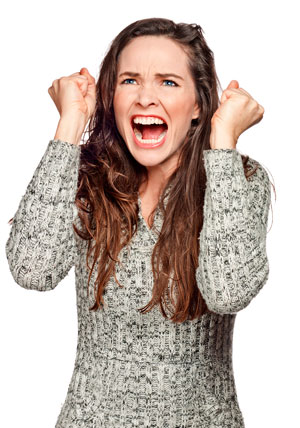 The manifestations of psychosis are very diverse, since the disease causes disturbances in behavior, thinking, and emotions. It is especially important for patients and their relatives to know how the disease begins and what happens during an exacerbation in order to start treatment in a timely manner. You may notice unusual behavior, refusal of food, strange statements, too emotional reaction to what is happening. The opposite situation also happens, a person ceases to be interested the world, nothing touches him, he is indifferent to everything, does not show any emotions, moves and talks little.
The manifestations of psychosis are very diverse, since the disease causes disturbances in behavior, thinking, and emotions. It is especially important for patients and their relatives to know how the disease begins and what happens during an exacerbation in order to start treatment in a timely manner. You may notice unusual behavior, refusal of food, strange statements, too emotional reaction to what is happening. The opposite situation also happens, a person ceases to be interested the world, nothing touches him, he is indifferent to everything, does not show any emotions, moves and talks little. The main manifestations of psychosis
hallucinations. They can be auditory, visual, tactile, gustatory, olfactory. The most common are auditory hallucinations. The person seems to hear voices. They can be in the head, come from the body, or come from outside. The voices are so real that the patient does not even doubt their authenticity. He perceives this phenomenon as a miracle or a gift from above. Voices are threatening, accusing or commanding. The latter are considered the most dangerous, since a person almost always follows these orders.
You can guess that a person has hallucinations by the following signs:
- He suddenly freezes and listens to something;
- Sudden silence in the middle of a phrase;
- Conversation with oneself in the form of replicas to someone's phrases;
- Laughter or depression for no apparent reason;
- The person cannot concentrate on a conversation with you, stares at something.
- Manifestations of depressive disorders:
- A person sits in one position for a long time, he has no desire and strength to move or communicate.
- Pessimistic attitude, the patient is dissatisfied with his past, present, future and the whole environment.
- To alleviate anxiety, a person can constantly eat or vice versa, completely refuse food.
- Sleep disturbances, early awakenings at 3-4 o'clock. It is at this time that mental suffering is most severe, which can lead to a suicide attempt.
- Manic symptoms:
- A person becomes extremely active, moves a lot, sometimes aimlessly.
- Unprecedented sociability, verbosity appears, speech becomes fast, emotional, and may be accompanied by grimacing.
- Optimistic attitude, a person does not see problems and obstacles.
- The patient builds unrealizable plans, significantly overestimates his strength.
- The need for sleep decreases, the person sleeps little, but feels vigorous and rested.
- The patient may abuse alcohol, engage in promiscuity.
Delusion is a mental disorder that manifests itself in the form of an idea that does not correspond to reality. A hallmark of delusions is that you can't convince a person with logical arguments. In addition, the patient always tells his crazy ideas very emotionally and is firmly convinced that he is right.
Distinctive signs and manifestations of delirium
- Brad is very different from reality. Incomprehensible cryptic statements appear in the patient's speech. They may relate to his guilt, doom, or vice versa greatness.
- The patient's personality always takes center stage. For example, a person not only believes in aliens, but also claims that they flew in specifically to establish contact with him.
- Emotionality. A person very emotionally talks about his ideas, does not accept objections. He does not tolerate disputes about his idea, immediately becomes aggressive.
- Behavior obeys a delusional idea. For example, he may refuse to eat, fearing that they want to poison him.
- Unreasonable protective actions. A person curtains windows, installs additional locks, fears for his life. These are manifestations of delusions of persecution. A person is afraid of the special services that follow him with the help of innovative equipment, aliens, "black" magicians who send damage to him, acquaintances who conspire around him.
- Delusions related to one's own health (hypochondriac). The person is convinced that he is seriously ill. He "feels" the symptoms of the disease, insists on numerous repeated examinations. Angry at doctors who can't find the reason for feeling unwell and don't confirm his diagnosis.
- Delusion of damage manifests itself in the belief that ill-wishers spoil or steal things, pour poison into food, act with the help of radiation, want to take away the apartment.
- Brad of invention. A person is confident that he has invented a unique device, perpetual motion machine or a way to deal with a dangerous disease. He fiercely defends his invention, persistently trying to bring it to life. Since the patients are not mentally impaired, their ideas can sound quite convincing.
- Love delirium and delirium of jealousy. A person concentrates on his emotions, pursues the object of his love. He comes up with a reason for jealousy, finds evidence of betrayal where there is none.
- Brad of litigation. The patient floods various authorities and the police with complaints about his neighbors or organizations. Files numerous lawsuits.
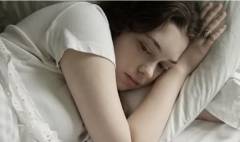
- Lethargy or stupor. A person freezes in one position, for a long time (days or weeks) remains without movement. He refuses food and communication.
- Motor excitement. Movements become fast, jerky, often aimless. The facial expressions are very emotional, the conversation is accompanied by grimaces. Can mimic someone else's speech, imitate the sounds of animals. Sometimes a person is unable to perform simple tasks due to the fact that he loses control over his movements.
What to do if someone close to you has alarming symptoms?
If you notice such manifestations, then talk to the person. Find out what is bothering him, what is the reason for the changes in his behavior. At the same time, it is necessary to exercise maximum tact, avoid reproaches and claims, and not raise your voice. One carelessly spoken word can lead to a suicide attempt.Convince the person to seek psychiatric help. Explain that the doctor will prescribe medications that will help to calm down, it is easier to endure stressful situations.
Types of psychoses
The most common are manic and depressive psychoses - in an outwardly healthy person, signs of depression or significant arousal suddenly appear. Such psychoses are called monopolar - the deviation occurs in one direction. In some cases, the patient may alternately show signs of both manic and depressive psychosis. In this case, doctors talk about bipolar disorder - manic-depressive psychosis.
manic psychosis
Manic psychosis - a severe mental disorder that causes the appearance of three characteristic symptoms: elevated mood, accelerated thinking and speech, noticeable motor activity. The periods of excitation last from 3 months to one and a half years.
depressive psychosis
depressive psychosis is a disease of the brain, and psychological manifestations are the external side of the disease. Depression begins slowly, imperceptibly for the patient himself and for others. As a rule, good, highly moral people fall into depression. They are tormented by a conscience that has grown to pathological dimensions. Confidence appears: “I am bad. I am not doing my job well, I have not achieved anything. I'm bad at raising kids. I am a bad husband. Everyone knows how bad I am and they talk about it." Depressive psychosis lasts from 3 months to a year.Depressive psychosis is the opposite of manic psychosis. He also has triad of characteristic symptoms
- pathologically depressed mood
Thoughts are centered around your personality, your mistakes and your shortcomings. Concentration on one's own negative sides gives rise to the belief that everything was bad in the past, the present cannot please with anything, and in the future everything will be even worse than it is now. On this basis, a person with depressive psychosis can lay hands on himself.
Since a person's intellect is preserved, he can carefully hide his desire for suicide so that no one violates his plans. At the same time, he does not show his depressed state and assures that he is already better. At home, it is not always possible to prevent a suicide attempt. Therefore, people with depression who are focused on self-destruction and their own low value are treated in a hospital.
A sick person experiences unreasonable longing, it crushes and oppresses. It is noteworthy that he can practically show with his finger where unpleasant sensations are concentrated, where “the soul hurts”. Therefore, this condition even received the name - precordial longing.
Depression in psychosis has a distinguishing feature: the condition is worst in the early morning, and by the evening it improves. The person explains this by the fact that in the evening there are more worries, the whole family gathers and this distracts from sad thoughts. But with depression caused by neurosis, on the contrary, the mood worsens in the evening.
Characteristically, in the acute period of depressive psychosis, patients do not cry. They say they would like to cry, but there are no tears. Therefore, crying in this case is a sign of improvement. Both patients and their relatives should remember this.
- Mental retardation
Mental and metabolic processes in the brain proceed very slowly. This may be due to a lack of neurotransmitters: dopamine, norepinephrine and serotonin. These chemicals ensure proper signal transmission between brain cells.
As a result of a deficiency of neurotransmitters, memory, reaction, and thinking deteriorate. A person quickly gets tired, does not want to do anything, he is not interested in anything, does not surprise and does not please. From them you can often hear the phrase “I envy other people. They can work, relax, have fun. I'm sorry I can't."
The patient constantly looks gloomy and sad. The look is dull, unblinking, the corners of the mouth are lowered, avoids communication, tries to retire. He slowly reacts to the appeal, answers in monosyllables, reluctantly, in a monotonous voice.
- Physical retardation
Depressive psychosis physically changes a person. Appetite falls, and the patient quickly loses weight. Therefore, weight gain with depression says that the patient is on the mend.
A person's movements become extremely slow: a slow, uncertain gait, stooped shoulders, a lowered head. The patient feels a loss of strength. Any physical activity worsens the condition.
In severe forms of depressive psychosis, a person falls into a stupor. He can sit for a long time without moving, looking at one point. If you try to read notations at this time; “get together, pull yourself together”, then only aggravate the situation. A person will have the thought: “I have to, but I can’t – that means I’m bad, good for nothing.” He cannot overcome depressive psychosis by an effort of will, since the production of norepinephrine and serotonin does not depend on our desire. Therefore, the patient needs qualified assistance and medical treatment.
There are a number physical signs depressive psychosis: diurnal mood swings, early awakenings, weight loss due to poor appetite, menstrual irregularities, dry mouth, constipation, some people may develop insensitivity to pain. These signs indicate that you need to apply for medical care.
Basic rules for communicating with patients with psychosis
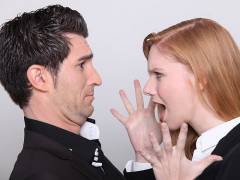
- Do not argue or object to people if you see signs of manic arousal in them. This can provoke an attack of anger and aggression. As a result, you can completely lose trust and turn the person against you.
- If the patient shows manic activity and aggression, keep calm, self-confidence and goodwill. Take him away, isolate him from other people, try to calm him down during the conversation.
- 80% of suicides are committed by patients with psychosis in the stage of depression. Therefore, be very attentive to loved ones during this period. Don't leave them alone, especially in the morning. Pay special attention to signs warning of a suicide attempt: the patient talks about an overwhelming sense of guilt, about voices ordering to kill himself, about hopelessness and uselessness, about plans to end his life. Suicide is preceded by a sharp transition of depression into a bright, peaceful mood, putting affairs in order, drawing up a will. Do not ignore these signs, even if you think that this is just an attempt to attract attention to yourself.
- Hide all items that can be used in a suicide attempt: household chemicals, medicines, weapons, sharp objects.
- Eliminate the traumatic situation if possible. Create a calm environment. Try to keep the patient surrounded by loved ones. Reassure him that he is now safe and everything is over.
- If a person is delusional, do not ask clarifying questions, do not ask for details (What do aliens look like? How many are there?). This may make the situation worse. "Seize on" any non-delusional statement he utters. Develop the conversation in that direction. You can focus on the person's emotions by asking, “I see you're upset. How can I help you?"
- If there are signs that the person has experienced hallucinations, then calmly and confidently ask him what happened now. If he saw or heard anything unusual, then find out what he thinks and feels about it. To cope with hallucinations, you can listen to loud music with headphones, do something exciting.
- If necessary, you can firmly recall the rules of behavior, ask the patient not to scream. But do not ridicule him, argue about hallucinations, say that it is impossible to hear voices.
- Do not seek help from traditional healers and psychics. Psychosis is very diverse, and for effective treatment it is necessary to accurately determine the cause of the disease. For this, it is necessary to use high-tech diagnostic methods. If you lose time on treatment with non-traditional methods, then acute psychosis will develop. In this case, it will take several times more time to fight the disease, and in the future it will be necessary to constantly take medication.
- If you see that the person is relatively calm and ready to communicate, try to convince him to see a doctor. Explain that any symptoms of illness that are bothering him can be relieved with medication prescribed by the doctor.
- If your relative flatly refuses to go to a psychiatrist, persuade him to go to a psychologist or psychotherapist to deal with depression. These specialists will help convince the patient that there is nothing to worry about in a visit to a psychiatrist.
- The most difficult step for loved ones is to call the psychiatric emergency team. But this must be done if a person directly declares his intention to end his life, can injure himself or harm other people.
Psychological treatments for psychosis
With psychosis psychological methods successfully complement medical treatment. A psychotherapist can help a patient:- reduce the symptoms of psychosis;
- avoid relapses;
- raise self-esteem;
- learn to adequately perceive the surrounding reality, correctly assess the situation, one's condition and respond accordingly, correct behavioral errors;
- eliminate the causes of psychosis;
- improve the effectiveness of medical treatment.
Psychotherapy eliminates personality disorders that occurred during the period of psychosis, puts thoughts and ideas in order. Working with a psychologist and psychotherapist makes it possible to influence future events and prevent the recurrence of the disease.
Psychological treatments are aimed at restoring mental health and at socializing a person after recovery in order to help him feel comfortable in the family, work team and society. This treatment is called psychosocialization.
Psychological methods that are used to treat psychosis are divided into individual and group. During individual sessions, the psychotherapist replaces the personal core lost during the illness. It becomes an external support for the patient, calms him down and helps to correctly assess reality and adequately respond to it.
 group therapy helps to feel like a member of society. A group of people struggling with psychosis is led by a specially trained person who has managed to successfully cope with this problem. This gives patients hope for recovery, helps to overcome awkwardness and return to normal life.
group therapy helps to feel like a member of society. A group of people struggling with psychosis is led by a specially trained person who has managed to successfully cope with this problem. This gives patients hope for recovery, helps to overcome awkwardness and return to normal life.In the treatment of psychosis, hypnosis, analytical and suggestive (from Latin Suggestio - suggestion) methods are not used. When working with altered consciousness, they can lead to further mental disorders.
Good results in the treatment of psychosis are given by: psychoeducation, addiction therapy, cognitive behavior therapy, psychoanalysis, family therapy, occupational therapy, art therapy, as well as psychosocial trainings: social competence training, metacognitive training.
Psychoeducation is the education of the patient and his family members. The psychotherapist talks about psychosis, about the features of this disease, the conditions for recovery, motivates to take medication and lead healthy lifestyle life. Tells relatives how to behave with the patient. If you disagree with something or have questions, then be sure to ask them at the time specially allotted for discussions. It is very important for the success of the treatment that you have no doubts.
Classes are held 1-2 times a week. If you visit them regularly, then you will form the right attitude towards the disease and drug treatment. Statistics say that thanks to such conversations, it is possible to reduce the risk of repeated episodes of psychosis by 60-80%.
addiction therapy necessary for those people whose psychosis has developed against the background of alcoholism and drug addiction. Such patients always have an internal conflict. On the one hand, they understand that they should not use drugs, but on the other hand, there is a strong desire to return to bad habits.
Classes are held in the form of an individual conversation. A psychotherapist talks about the relationship between drug use and psychosis. He will tell you how to behave in order to reduce the temptation. Addiction therapy helps build a strong motivation to abstain from bad habits.
Cognitive (behavioral) therapy. Cognitive therapy is recognized as one of the best practices treatment of psychosis accompanied by depression. The method is based on the fact that erroneous thoughts and fantasies (cognitions) interfere with the normal perception of reality. During the sessions, the doctor will bring out these wrong judgments and the emotions associated with them. He will teach you how to be critical of them, and not let these thoughts influence your behavior, tell you how to look for alternative ways to solve the problem.
To achieve this goal, a protocol of negative thoughts is used. It contains the following columns: negative thoughts, the situation in which they arose, the emotions associated with them, the facts “for” and “against” these thoughts. The course of treatment consists of 15-25 individual sessions and lasts 4-12 months.
Psychoanalysis. Although this technique is not used to treat schizophrenia and affective (emotional) psychoses, its modern "supportive" version is effectively used to treat other forms of the disease. At individual meetings, the patient reveals his inner world to the psychoanalyst and transfers to him feelings directed at other people. During the conversation, the specialist identifies the reasons that led to the development of psychosis (conflicts, psychological trauma) and the defense mechanisms that a person uses to protect himself from such situations. The treatment process takes 3-5 years.
Family Therapy - group therapy, during which the specialist conducts classes with family members where the patient with psychosis lives. Therapy is aimed at eliminating conflicts in the family, which can cause exacerbations of the disease. The doctor will talk about the features of the course of psychosis and the correct behavior in crisis situations. Therapy is aimed at preventing relapses and ensuring that all family members are comfortable living together.
Ergotherapy. This type of therapy is most often group therapy. The patient is recommended to attend special classes where he can engage in various activities: cooking, gardening, working with wood, textiles, clay, reading, writing poetry, listening to and writing music. Such activities train memory, patience, concentration, develop creative abilities, help open up, establish contact with other members of the group.
The specific setting of tasks, the achievement of simple goals gives the patient confidence that he again becomes the master of his life.
 Art therapy - method of art therapy based on psychoanalysis. It is a “no-words” healing method that activates the possibilities for self-healing. The patient creates a picture expressing his feelings, an image of his inner world. Then the specialist studies it from the point of view of psychoanalysis.
Art therapy - method of art therapy based on psychoanalysis. It is a “no-words” healing method that activates the possibilities for self-healing. The patient creates a picture expressing his feelings, an image of his inner world. Then the specialist studies it from the point of view of psychoanalysis.
Social competence training. A group activity in which people learn and put into practice new forms of behavior in order to then apply them in Everyday life. For example, how to behave when meeting new people, when applying for a job or in conflict situations. In subsequent sessions, it is customary to discuss the problems that people encountered when implementing them in real situations.metacognitive training. Group training sessions that are aimed at correcting the thinking errors that lead to delusions: distorted attribution of judgments to people (he does not love me), hasty conclusions (if he does not love, he wants me dead), depressive way of thinking, inability to empathize , feel other people's emotions, painful confidence in memory impairment. The training consists of 8 sessions and lasts 4 weeks. At each module, the trainer analyzes thinking errors and helps to form new models of thoughts and behavior.
Psychotherapy is widely used in all forms of psychosis. It can help people of all ages, but is especially important for teenagers. At a time when life attitudes and stereotypes of behavior are just being formed, psychotherapy can radically change life for the better.
Drug treatment of psychoses
Medicinal treatment of psychosis is a prerequisite for recovery. Without it, it will not be possible to get out of the trap of the disease, and the condition will only worsen.There is no single drug therapy for psychosis. The doctor prescribes drugs strictly individually, based on the manifestations of the disease and the characteristics of its course, gender and age of the patient. During treatment, the doctor monitors the patient's condition and, if necessary, increases or reduces the dose in order to achieve a positive effect and not cause side effects.
Treatment of manic psychosis
Drug group The mechanism of the treated action Representatives How is it prescribed Antipsychotic drugs (neuroleptics) They are used for all forms of psychosis. Block dopamine receptors. This substance is a neurotransmitter that promotes the transfer of excitation between brain cells. Thanks to the action of neuroleptics, it is possible to reduce the severity of delusions, hallucinations and thought disorders. Solian (effective for negative disorders: lack of emotions, withdrawal from communication) In the acute period, 400-800 mg / day is prescribed, up to a maximum of 1200 mg / day. Take with or without food.
Maintenance dose 50-300 mg / day.Zeldox 40-80 mg 2 times a day. The dose is increased over 3 days. The drug is administered orally after meals. Fluanxol The daily dose is 40-150 mg / day, divided into 4 times. Tablets are taken after meals.
The drug is also produced in the form of a solution for injection, which is done 1 time in 2-4 weeks.Benzodiazepines They are prescribed for acute manifestations of psychosis in conjunction with antipsychotic drugs. They reduce the excitability of nerve cells, have a calming and anticonvulsant effect, relax muscles, eliminate insomnia, and reduce anxiety. Oxazepam Take 5-10 mg twice or thrice a day. If necessary, the daily dose can be increased to 60 mg. The drug is taken regardless of food, drinking plenty of water. The duration of treatment is 2-4 weeks. Zopiclone Take 7.5-15 mg 1 time per day half an hour before bedtime, if psychosis is accompanied by insomnia. Mood stabilizers (normotimics) Normalize mood, preventing the onset of manic phases, make it possible to control emotions. Actinerval (derivative of carbamazepine and valproic acid) The first week the daily dose is 200-400 mg, it is divided into 3-4 times. Every 7 days, the dose is increased by 200 mg, bringing up to 1 g. The drug is also canceled gradually so as not to cause a deterioration in the condition. Contemnol (contains lithium carbonate) Take 1 g per day once in the morning after breakfast, drinking plenty of water or milk. Anticholinergic drugs (anticholinergics) Necessary to neutralize side effects after taking antipsychotics. Regulates the sensitivity of the nerve cells of the brain, blocking the action of the mediator acetylcholine, which ensures the transmission of nerve impulses between the cells of the parasympathetic nervous system. Cyclodol, (Parkopan) The initial dose is 0.5-1 mg / day. If necessary, it can be gradually increased to 20 mg / day. Multiplicity of reception 3-5 times a day, after meals. Treatment of depressive psychosis
Drug group The mechanism of the treated action Representatives How is it prescribed Antipsychotic drugs They make brain cells less sensitive to excess amounts of dopamine, a substance that promotes signaling in the brain. Drugs normalize thought processes, eliminate hallucinations and delusions. Quentiax During the first four days of treatment, the dose is increased from 50 to 300 mg. In the future, the daily dose may be from 150 to 750 mg / day. The drug is taken 2 times a day, regardless of food intake. Eglonil Tablets and capsules are taken 1-3 times a day, regardless of food intake. Daily dose of 50 to 150 mg for 4 weeks. The drug is not advisable to use after 16 hours, so as not to cause insomnia. Rispolept Konsta A suspension is prepared from microgranules and the solvent included in the kit, which is injected into the gluteal muscle 1 time in 2 weeks. Risperidone The initial dose is 1 mg 2 times a day. Tablets of 1-2 mg are taken 1-2 times a day. Benzodiazepines It is prescribed for acute manifestations of depression and severe anxiety. The drugs reduce the excitability of the subcortical structures of the brain, relax the muscles, relieve the feeling of fear, and calm the nervous system. Phenazepam Take 0.25-0.5 mg 2-3 times a day. The maximum daily dose should not exceed 0.01 g.
Assign short courses so as not to cause dependence. After the onset of improvement, the dosage is gradually reduced.Lorazepam Take 1 mg 2-3 times a day. With severe depression, the dose can be gradually increased to 4-6 mg / day. Cancel the drug gradually because of the risk of seizures. Normotimics Drugs designed to normalize mood and prevent periods of depression. lithium carbonate Take orally 3-4 times a day. The initial dose is 0.6-0.9 g / day, gradually the amount of the drug is increased to 1.5-2.1 g. The drug is taken after meals to reduce the irritating effect on the gastric mucosa. Antidepressants Remedies to fight depression. Modern 3rd generation antidepressants reduce the uptake of serotonin by neurons and thereby increase the concentration of this neurotransmitter. They improve mood, relieve anxiety and longing, fear. Sertraline Take orally 50 mg, 1 time per day after breakfast or dinner. If there is no effect, the doctor may gradually increase the dose to 200 mg / day. Paroxetine Take 20-40 mg / day in the morning during breakfast. The tablet is swallowed without chewing and washed down with water. Anticholinergic drugs Drugs that can eliminate the side effects of taking antipsychotics. Slowness of movement, muscle stiffness, trembling, impaired thinking, increased or absent emotions. Akineton 2.5-5 mg of the drug is administered intravenously or intramuscularly.
In tablets, the initial dose is 1 mg 1-2 times / day, gradually the amount of the drug is adjusted to 3-16 mg / day. The dose is divided into 3 doses. Tablets are taken during or after meals with liquid.
Recall that any independent change in dose can have very serious consequences. Reducing the dosage or refusing to take medication causes an exacerbation of psychosis. Increasing the dose increases the risk of side effects and addiction.Prevention of psychoses
What should be done to prevent a relapse of psychosis?Unfortunately, people who have experienced psychosis are at risk of experiencing a relapse of the disease. A repeated episode of psychosis is a difficult test for both the patient himself and his relatives. But you can reduce your risk of relapse by up to 80% if you take your doctor's prescription medications.
- Medical therapy- the main point of prevention of psychosis. If you find it difficult to take your medications every day, talk to your doctor about switching to a depot form of antipsychotic medication. In this case, it will be possible to make 1 injection in 2-4 weeks.
It has been proven that after the first case of psychosis, the use of drugs for one year is necessary. With manic manifestations of psychosis, lithium salts and Finlepsin are prescribed at 600-1200 mg per day. And with depressive psychosis, Carbamazepine is needed at 600-1200 mg per day.
- Regularly attend individual and group psychotherapy sessions. They boost your self-confidence and motivation to get well. In addition, a psychotherapist can notice signs of an approaching exacerbation in time, which will help adjust the dosage of drugs and prevent a recurrence.
 Follow the daily routine. Train yourself to get up, take food and medicine at the same time every day. A daily schedule can help with this. From the evening, plan tomorrow. Make a list of all the things you need to do. Mark which of them are important and which are secondary. Such planning will help you not to forget anything, to be in time for everything and to be less nervous. When planning, set realistic goals.
Follow the daily routine. Train yourself to get up, take food and medicine at the same time every day. A daily schedule can help with this. From the evening, plan tomorrow. Make a list of all the things you need to do. Mark which of them are important and which are secondary. Such planning will help you not to forget anything, to be in time for everything and to be less nervous. When planning, set realistic goals.- Communicate more. You will feel comfortable around people who have managed to overcome psychosis. Communicate in self-help groups or on specialized forums.
- Exercise daily. Suitable for running, swimming, cycling. It is very good if you do this in a group of like-minded people, then the classes will bring both benefit and pleasure.
- Make a list of early symptoms of a coming crisis, the appearance of which must be reported to the attending physician. Pay attention to these signals:
- Behavior changes: frequent leaving the house, prolonged listening to music, unreasonable laughter, illogical statements, excessive philosophizing, conversations with people with whom you usually do not want to communicate, fussy movements, squandering, adventurism.
- Mood changes: irritability, tearfulness, aggressiveness, anxiety, fear.
- Feeling changes: sleep disturbance, lack or increased appetite, increased sweating, weakness, weight loss.
- Don't drink too much coffee. It can have a strong stimulating effect on the nervous system. Give up alcohol and drugs. They have a bad effect on the brain, cause mental and motor excitement, attacks of aggression.
- Don't overwork. Physical and mental exhaustion can cause extreme confusion, inconsistent thinking, and overreaction to external stimuli. These deviations are associated with a violation of the absorption of oxygen and glucose by nerve cells.
- Do not sweat in the bath, try to avoid overheating. An increase in body temperature often leads to the appearance of delirium, which is explained by an increase in the activity of electrical potentials in the brain, an increase in their frequency and amplitude.
- Don't conflict. Try to resolve conflicts constructively to avoid stress. Strong mental stress can become a trigger for a new crisis.
- Don't refuse treatment. During an exacerbation, the temptation to refuse to take medication and visit a doctor is especially great. Do not do this, otherwise the disease will become acute and hospital treatment will be required.

What is postpartum psychosis?
 postpartum psychosis quite rare mental illness. It develops in 1-2 out of 1000 women in labor. Signs of psychosis most often appear during the first 4-6 weeks after childbirth. Unlike postpartum depression, this mental disorder is characterized by delusions, hallucinations, and a desire to harm yourself or your baby.
postpartum psychosis quite rare mental illness. It develops in 1-2 out of 1000 women in labor. Signs of psychosis most often appear during the first 4-6 weeks after childbirth. Unlike postpartum depression, this mental disorder is characterized by delusions, hallucinations, and a desire to harm yourself or your baby. Manifestations of postpartum psychosis.
The first signs of the disease are sudden mood swings, anxiety, severe anxiety, unreasonable fears. Further delusions and hallucinations appear. A woman may claim that the child is not hers, that he is stillborn or crippled. Sometimes a young mother develops paranoia, she stops going for walks and does not let anyone near her child. In some cases, the disease is accompanied by megalomania, when a woman is confident in her superpowers. She can hear voices ordering her to kill herself or the child.
According to statistics, 5% of women in a state of postpartum psychosis kill themselves, and 4% of their child. Therefore, it is very important for relatives not to ignore the signs of the disease, but to contact a psychiatrist in a timely manner.
Causes of postpartum psychosis.
The cause of mental disorders can be difficult childbirth, unwanted pregnancy, conflict with her husband, fear that the spouse will love the child more than her. Psychologists believe that psychosis can be caused by conflict between a woman and her mother. It can also be caused by damage to the brain as a result of injury or infection. A sharp decrease in the level of the female hormone estrogen, as well as endorphins, thyroid hormone and cortisol, can affect the development of psychosis.
In about half of the cases, postpartum psychosis develops in patients with schizophrenia or manic-depressive syndrome.
Treatment of postpartum psychosis.
Treatment must be started as soon as possible because the woman's condition is rapidly deteriorating. If there is a risk of suicide, then the woman will be treated in a psychiatric ward. During the period while she is taking medicines, it is impossible to breastfeed the baby, since most of the drugs penetrate the mother's milk. But communication with the child will be useful. Caring for the baby (provided that the woman herself wants it) helps to normalize the state of the psyche.
If a woman is depressed, then antidepressants are prescribed. Amitriptyline, Pirlindol are indicated if anxiety and fear predominate. Citalopram, Paroxetine have a stimulating effect. They will help in the case when psychosis is accompanied by stupor - a woman sits motionless, refuses to communicate.
With mental and motor agitation and manifestations of a manic syndrome, lithium preparations (lithium carbonate, Micalit) and antipsychotics (Clozapine, Olanzapine) are necessary.
Psychotherapy for postpartum psychosis is used only after the elimination of acute manifestations. It is aimed at identifying and resolving conflicts that led to a mental disorder.
What is reactive psychosis?
 Reactive psychosis or psychogenic shock - a mental disorder that arose after a severe psychological trauma. This form of the disease has three features that distinguish it from other psychoses (Jaspers' triad):
Reactive psychosis or psychogenic shock - a mental disorder that arose after a severe psychological trauma. This form of the disease has three features that distinguish it from other psychoses (Jaspers' triad): - Psychosis begins after a severe emotional shock that is very significant for this person.
- Reactive psychosis is reversible. The more time has passed since the injury, the weaker the symptoms. In most cases, recovery occurs after about a year.
- Painful experiences and manifestations of psychosis depend on the nature of the trauma. Between them there is a psychologically understandable connection.
A mental disorder occurs after a strong shock: a catastrophe, an attack by criminals, a fire, a collapse of plans, a career collapse, a divorce, illness or death of a loved one. In some cases, positive events that caused an explosion of emotions can also provoke psychosis.
Especially at risk of developing reactive psychosis are emotionally unstable people, those who have suffered a bruise or concussion, severe infectious diseases, whose brain has suffered from alcohol or drug intoxication. As well as teenagers in puberty and women going through menopause.
Manifestations of reactive psychosis.
Symptoms of psychosis depend on the nature of the injury and the form of the disease. There are such forms of reactive psychosis:
- psychogenic depression;
- psychogenic paranoid;
- hysterical psychosis;
- psychogenic stupor.
Psychogenic paranoid accompanied by delirium, auditory hallucinations and motor excitation. It seems to the patient that he is being persecuted, he fears for his life, is afraid of exposure and is fighting imaginary enemies. Symptoms depend on the nature of the stressful situation. The person is very excited, commits rash acts. This form of reactive psychosis often occurs on the road, as a result of lack of sleep, alcohol consumption.
hysterical psychosis has several forms.
- delusional fantasies - crazy ideas that relate to greatness, wealth, persecution. The patient tells them very theatrically and emotionally. Unlike delirium, a person is not sure of his words, and the essence of statements changes depending on the situation.
- Ganser syndrome patients do not know who they are, where they are, what year it is. They answer simple questions incorrectly. They commit illogical actions (eat soup with a fork).
- pseudodementia - short-term loss of all knowledge and skills. A person cannot answer the simplest questions, show where his ear is, or count his fingers. He is naughty, grimaces, cannot sit still.
- Puerilism Syndrome - an adult has a child's speech, children's emotions, children's movements. May develop initially or as a complication of pseudodementia.
- Syndrome of "wildness" - human behavior resembles the habits of an animal. Speech is replaced by a growl, the patient does not recognize clothes and cutlery, moves on all fours. This condition, with an unfavorable course, can change puerilism.
Treatment of reactive psychosis.
The most important step in the treatment of reactive psychosis is the elimination of the traumatic situation. If you manage to do this, then the probability of a quick recovery is high.
Drug treatment of reactive psychosis depends on the severity of the manifestations and characteristics of the psychological state.At reactive depression prescribe antidepressants: Imipramine 150-300 mg per day or Sertraline 50-100 mg 1 time per day after breakfast. Supplement therapy with tranquilizers Sibazon 5-15 mg / day or Phenazepam 1-3 mg / day.
Psychogenic paranoid treated with neuroleptics: Triftazin or Haloperidol 5-15 mg / day.
With hysterical psychosis, it is necessary to take tranquilizers (Diazepam 5-15 mg / day, Mezapam 20-40 mg / day) and neuroleptics (Alimemazine 40-60 mg / day or Neuleptil 30-40 mg / day).
Psychostimulants can bring a person out of a psychogenic stupor, for example, Sydnocarb 30-40 mg / day or Ritalin 10-30 mg / day.Psychotherapy can save a person from excessive fixation on a traumatic situation and develop protective mechanisms. However, it is possible to proceed to consultations with a psychotherapist only after the acute phase of psychosis has passed, and the person has regained the ability to perceive the arguments of a specialist.
Remember - psychosis is curable! Self-discipline, regular medication, psychotherapy and the help of loved ones guarantee the return of mental health.
Mental disorder is a very frightening phrase that every person is afraid to hear addressed to him. In fact, this term has very wide boundaries, far from always a mental diagnosis is a sentence. In different contexts (legal, psychiatric, psychological) this concept is interpreted differently. In the ICD-10 list, mental and behavioral disorders are singled out as a separate class of diseases and differ according to the clinical picture. The features of the human psyche at all times aroused great interest among doctors and scientists, especially from the point of view of the boundary between the norm and pathology. The World Health Organization claims that every fifth person on the planet suffers from various mental disorders. What are the types of mental disorders? What causes mental disorders?
Etiological differences

The human psyche and brain are so complex that it is still not possible to clearly identify all the causes of mental disorders. The most correct is the opinion that such diseases develop as a result of the complex influence of social, personal and biological causes. All provoking factors can be divided into two broad categories: endogenous (internal) and exogenous (external). Mental disorders of an endogenous nature are more associated with genes and heredity. The onset of such diseases usually occurs suddenly, without any obvious environmental influences. Exogenous factors include various neuroinfections, stressful situations, intoxications, psychological traumas received in the process of personality formation. Mental disorders in brain injuries or vascular disorders are also a consequence of the influence of external causes. Sometimes it happens that the inclination itself to certain mental illness does not guarantee their occurrence. However, it is various external factors and features of the psyche that can eventually work as a trigger.
The first symptoms of mental disorders
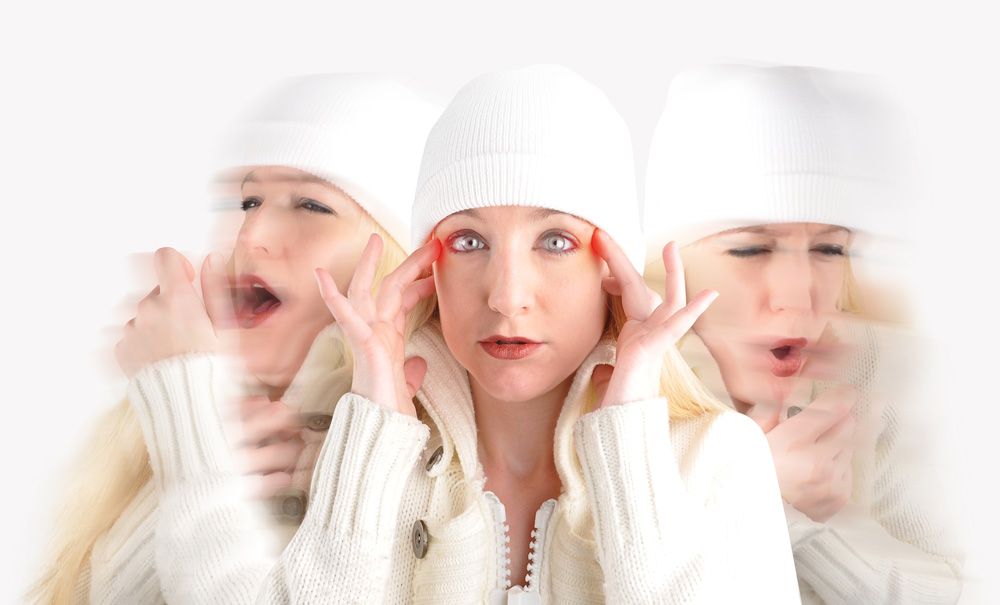
How to understand that the psyche is not all right? When should you definitely contact a specialist? Any mental disorder can be recognized by characteristics even at the earliest stage of the disease. These include violations of the thought process, normal mood, as well as behavioral deviations that go beyond the boundaries of the concept of social norms and beliefs. The symptoms of mental disorders almost always have a negative impact on the family and professional life of a person, interfere with the performance of daily functions and cause a state of oppression.
What do the signs of a mental disorder look like from the outside? For example, a person can hear or see something non-existent, a tendency to aggression, various abuses or other reactions unusual for him before appear in his behavior. At the cognitive level, difficulties to think clearly and logically become noticeable, problems with memory appear. The earliest signs of mental disorders include emotional disturbances: anxiety, fear, sadness, despondency. Many mental disorders accompanied by various somatic symptoms. These include sleep problems, pain, fatigue, etc. If any of the described symptoms interfere with a person’s normal life, be sure to consult a psychologist or psychotherapist.
Types of mental disorders
Since the time of E. Kraepelin (a famous German psychiatrist), it has been customary to divide mental illnesses into groups, as nosological units. However, in modern psychiatry, when the boundaries of mental disorders are blurred, it is more relevant to distinguish them on the basis of syndromology.
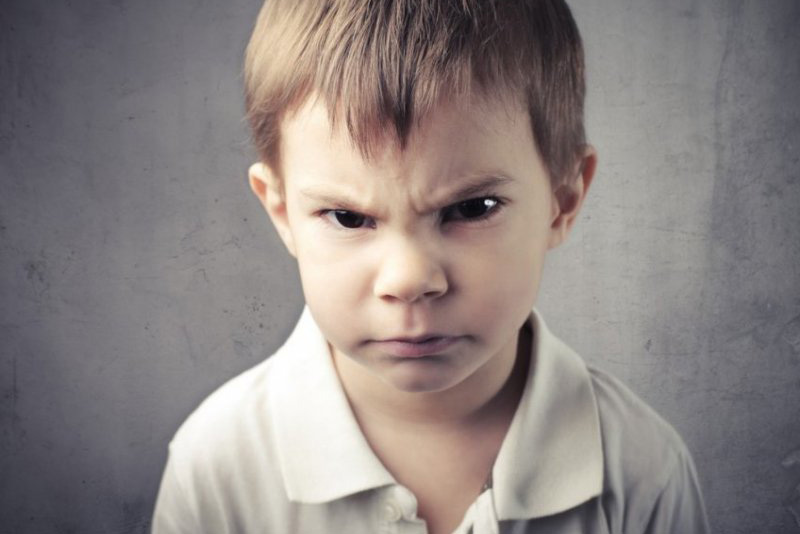
The ICD-10 international classification includes the following list of mental and behavioral disorders (F00-F99):
- F00-F09 Organic, including symptomatic, mental disorders ((dementia, memory impairment and other abnormalities of mental functions associated with organic brain damage);
- F10-F19 Mental and behavioral disorders associated with the use of psychoactive substances (alcohol and drug addictions and syndromes);
- F20-F29 Schizophrenia, schizotypal and delusional disorders;
- F30-F39 Mood disorders (affective disorders) (depressions, bipolar disorder, manic episodes);
- F40-F48 Stress-related neurotic and somatoform disorders (all list of phobias, anxiety and dissociative disorders, obsessive compulsive disorder, neuroses);
- F50-F59 Behavioral syndromes associated with physiological disorders and physical factors (eating disorders, sleep disorders, sexual functions);
- F60-F69 Disorders of personality and behavior in adulthood (paranoid, schizoid and other psychopathy, various behavioral manias, sexual disorders);
- F70-F79 Mental retardation(oligophrenia);
- F80-F89 Disorders psychological development(speech, motor and other disorders of psychological development);
- F90-F98 Emotional disorders, behavioral disorders, usually onset in childhood and adolescence (attention deficit hyperactivity disorder, childhood conduct disorders, phobias and anxiety disorders);
- F99 Unspecified mental disorders.
Disorders of the affective sphere

Emotional disorders are perhaps the most common among the entire spectrum of mental illnesses. Especially in recent decades, the number of patients with various depressions has increased many times over. It has to do with the fast pace. modern life and a lot of daily stress. It is noteworthy that affective mental disorders in women are diagnosed almost twice as often as in men. The reason lies in the greater propensity of the female half to emotional experiences. The main violations relate to the sphere of mood, which changes either in the direction of uplift or oppression. It is these symptoms that affect the level of human activity most clearly, and all other manifestations are secondary. Emotional disorders can have the character of a single depressive or manic episode, but they can also be chronic with periodic exacerbations. Severe cases are often accompanied by delusional and hallucinatory manifestations. If your altered mood is negatively affecting your performance and daily activities, it is best to consult a psychologist or psychotherapist to prevent the situation from aggravating.

Mental disorders that fall into this category are mainly associated with deviations from generally accepted norms in human behavior and lifestyle. Some psychopathic behavior patterns appear quite early, while others become pronounced already in adulthood. People with personality disorders are characterized by a tendency to rigidity (lack of flexibility) of thinking, inability to build interpersonal relationships and show appropriate feelings. The cause of profound personality changes can be experienced severe psychological trauma, a long period of tension and stress, or another mental disorder. Psychopathies are distinguished from merely sharpened personality traits by deeply ingrained patterns of behavior and reactions that manifest themselves in all areas of life, not just in certain situations. If pathological personality traits violate social adaptation person, without a course of psychotherapy is indispensable.
neurotic diseases
Neuropsychiatric disorders include all kinds of phobias, panic, anxiety, dissociative states. Most diseases in this category are due to psychological causes and fall under the concept of neurosis. The most pronounced symptom of these disorders is a tendency to anxious feelings. With phobias, these emotions are accompanied by an increase in fear and become aggravated when a person feels the proximity of the object of his fears. Anxiety during panic attacks can increase dramatically without visible external factors. Neurotic states in the body cause such reactions in which anxiety manifests itself at the somatic level. A person may feel various pains, nausea, dizziness, his heart rate increases, shortness of breath, sweating and other unpleasant sensations appear. Anxiety-reducing drugs and cognitive-behavioral techniques can help manage these conditions.
Symptomatic disorders of an organic nature
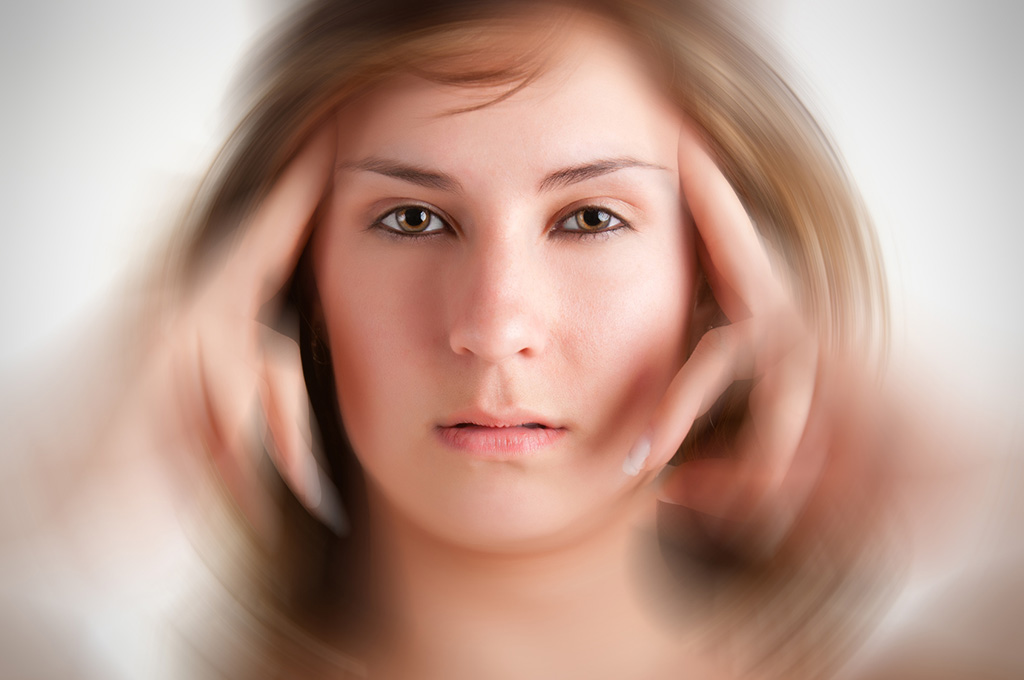
The human psyche and brain are very closely interconnected, so it is not surprising that various organic damage to brain structures cause characteristic syndromes of mental disorders. Most often, brain damage negatively affects memory, learning, intellectual abilities, attention and consciousness functions. Although in this group of diseases there are also such symptomatic mental disorders, in which the leading signs are disturbances in the process of perception, the affective sphere, personality and behavioral traits, as well as a thought disorder. These include manic, hallucinatory and delusional manifestations caused by various injuries, infections, tumors and vascular damage to the brain tissue. And yet, brain damage affects the memory and intelligence of a person most of all. Therefore, various types of dementia and amnestic syndromes are included in this category, including acquired dementia caused by epilepsy, Pick's disease, Parkinson's, Alzheimer's and other neurological diseases.
Mental illnesses occurring with psychosis
This group includes schizophrenia, various delusional and schizotypal states, as well as acute polymorphic psychotic disorder. Such diseases are characterized by vivid symptoms, complex disorders of the psyche and affect. These mental disorders are more common in men. Crazy ideas, eccentric behavior, emotional outbursts that appear in a person at the time of psychosis clearly indicate mental disorders, which rarely causes controversy in the diagnosis. Separately, acute polymorphic psychotic disorder should be singled out. From the name it can be seen that by the nature of psychoses it is very similar to schizophrenia, however, it differs in etiology and course. Schizophrenia refers to endogenous diseases, and polymorphic psychotic disorder always develops due to acute stress and severe emotional shock. It starts suddenly, with a sharp change in behavior and mood, however, rarely lasts more than three months, and bright psychotic symptoms with adequate treatment decrease after a couple of weeks.
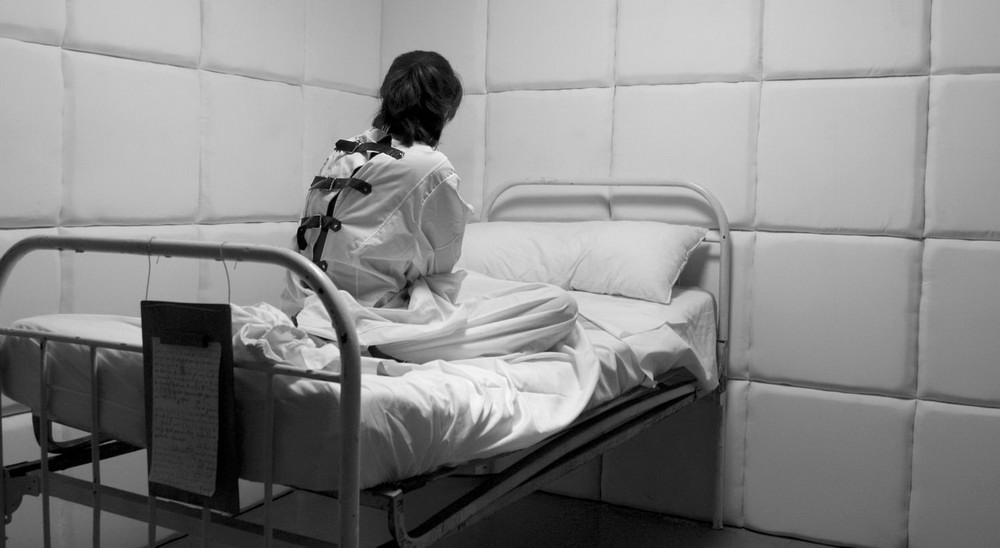
Many, especially endogenous mental disorders often lead to severe and irreversible consequences for a person. Such diseases include various forms of schizophrenia, dementia, dementia, as well as deep depression and congenital mental pathologies that disrupt the natural mechanisms of personality and intelligence formation. Severe mental disorders make a person inadequate and often dangerous to others. However, in most cases, such people are in hospital under the supervision of doctors and rarely remain on their own. In such situations, high-quality treatment with the use of modern drugs and psychotherapeutic techniques is extremely important. Good care and support of relatives make it possible in many cases to achieve a more or less acceptable level of adaptation of such a patient in society.
Attitudes towards mental disorders in society
Rumor about mental illness it scares a neighbor or someone you know, makes you wary. Most people try to avoid contact with patients of neuropsychiatric clinics due to stereotypical attitudes. However, more often various options mental deviations create more difficulties for the patient himself than for the people around him. Some mental disorders can provoke a tendency to antisocial behavior, up to breaking the law. At the same time, a person can be recognized as insane and sent for compulsory treatment. Even a mental disorder, which does not exclude sanity, serves as a mitigating circumstance in determining the degree of guilt, because the human psyche is a delicate and completely unknown matter. Outdated stereotypes cause complexes in people that do not allow open access to psychotherapists, while in Western cultures this is a normal practice. No one is immune from mental disorders, so do not ignore psychologists and other professionals who can help cope with psychological problems. Timely seeking medical help avoids the severe and irreversible consequences of mental disorders.
Psychosis is a serious mental disorder, such a deep violation of the mental, emotional and affective components is considered quite dangerous for patients.
The disease manifests itself in a sharp change in the patient's behavior, the loss of an adequate attitude to life and others, in the absence of a desire to perceive the existing reality. At the same time, they interfere with the awareness of the presence of these very problems, a person cannot eliminate them on his own.
Due to the emotional component, hormonal explosions and susceptibility, women and other mental disorders occur twice as often as (7 vs. 3%, respectively).
What are the reasons and who is most at risk?
The main causes of the development of psychosis in females are as follows:

One of the main reasons is increased emotional excitability or the presence of a similar disease in the woman's family, mother, sister, that is, the genetic component.
Who is at risk
The root cause of the appearance of psychosis is often alcohol abuse and subsequent intoxication of the body. In most cases, men are most susceptible to alcoholism, so the female suffers from much less often and endure it faster and easier.
But there is also a reason that is characteristic only for women, which increases the risk of the disease. This is pregnancy and childbirth. To the physical factors of the appearance of psychosis in this case include toxicosis, vitamin deficiency, a decrease in the tone of all body systems, various diseases or complications due to difficult pregnancy and childbirth.
Psychological ones include fear, worries, increased emotional sensitivity, unwillingness to become a mother. At the same time, postpartum mental disorder is more common than during pregnancy.
Behavioral Features
For a woman with mental disorders, such changes in behavior and life activity are characteristic (with the symptoms
 noticeable only from the outside, the sickest and unaware that she is sick):
noticeable only from the outside, the sickest and unaware that she is sick):- lack of resistance to, which often leads to or scandals;
- the desire to isolate oneself from communication with colleagues, friends and even relatives;
- there is a craving for something unreal, supernatural, interest in magical practices, shamanism, religion and similar areas;
- the emergence of various fears, phobias;
- decreased concentration, mental retardation;
- loss of strength, apathy, unwillingness to show any activity;
- sudden mood swings for no apparent reason;
- sleep disturbances, which can manifest itself both in excessive drowsiness and insomnia;
- decrease or complete lack of desire to eat food.
If a woman herself was able to detect any signs of psychosis, or if her relatives noticed them, then it is urgent to seek qualified help.
Varieties of deviations in the mental state
Psychosis can be conditionally divided into two large groups:
- organic. In such cases, it is a consequence of a physical illness, a secondary disorder after disturbances in the functioning of the central nervous and cardiovascular systems.
- Functional. Such disorders are initially due to the psychosocial factor and the presence of a predisposition to their occurrence. These include violations of the process of thinking and perception. Among others, the most common:, schizophrenia,.
Separately, it can be distinguished, it appears in 1 - 3% of women in the first months after the birth of a child, unlike the more common postpartum depression, the psychotic deviation does not go away on its own and requires treatment under the qualified supervision of specialists.
Symptoms:
- decreased appetite and rapid weight loss;
- constant anxiety, sudden mood swings;
- desire for isolation, refusal to communicate;
- violation of the level of self-esteem;
- thoughts about committing suicide.
Symptoms appear individually, some may be within a day after giving birth, others a month later.
The causes of this type of psychotic disorder may be different, but they are not fully understood by scientists. It is reliably known that patients who have a genetic predisposition are susceptible to it.
The failure of the psyche can be accompanied by various conditions that provoke disturbances in the work of the whole body of a woman.
Violation of diet, activity and rest, emotional tension, taking medications. These factors "hit" the nervous, cardiovascular, respiratory, digestive and endocrine systems. The manifestation of concomitant diseases individually.

Who to turn to for help?
Self-medication in this case is contraindicated. You should also not contact familiar doctors of various specialties, psychologists, traditional healers. Treatment should be carried out only by a public or private doctor - a highly qualified psychotherapist!
Unfortunately, a woman suffering from psychosis cannot seek help herself, because she does not notice the signs of her illness. Therefore, the responsibility lies with the relatives and friends of the mother. Seek help from a doctor as soon as possible.
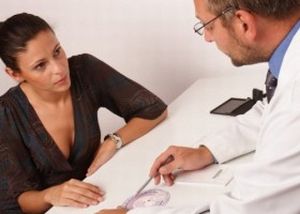 The specialist will examine the patient, refer him for additional tests and, based on their results, prescribe treatment and the necessary drugs.
The specialist will examine the patient, refer him for additional tests and, based on their results, prescribe treatment and the necessary drugs.Treatment can take place in a hospital with the participation of medical staff, or at home. When treating at home, a mandatory safety measure will be taking care of the baby with the least intervention of the mother (in case of postpartum mental failure). The nanny or relatives should take care of these concerns until the disappearance of all symptoms of the disease in the patient.
Treatment usually consists of a complex, which includes:
- medicines, usually this,;
- psychotherapy - regular sessions with a psychotherapist and a family psychologist;
- social adaptation.
The patient can not immediately realize, accept her condition to the end. Relatives and friends must be patient to help the woman return to normal life.
The consequences of the lack of therapy are extremely unfavorable. The patient loses touch with reality, her behavior becomes inadequate and dangerous not only for own life and health, but also for others.
A person is suicidal, may become a victim or cause of violence.
How to prevent mental breakdown?
Preventive measures include:

Prevention should be a priority, especially in those women who are prone to emotional disruption or have a hereditary predisposition to psychotic disorders.
09.03.2019Mental disorders


